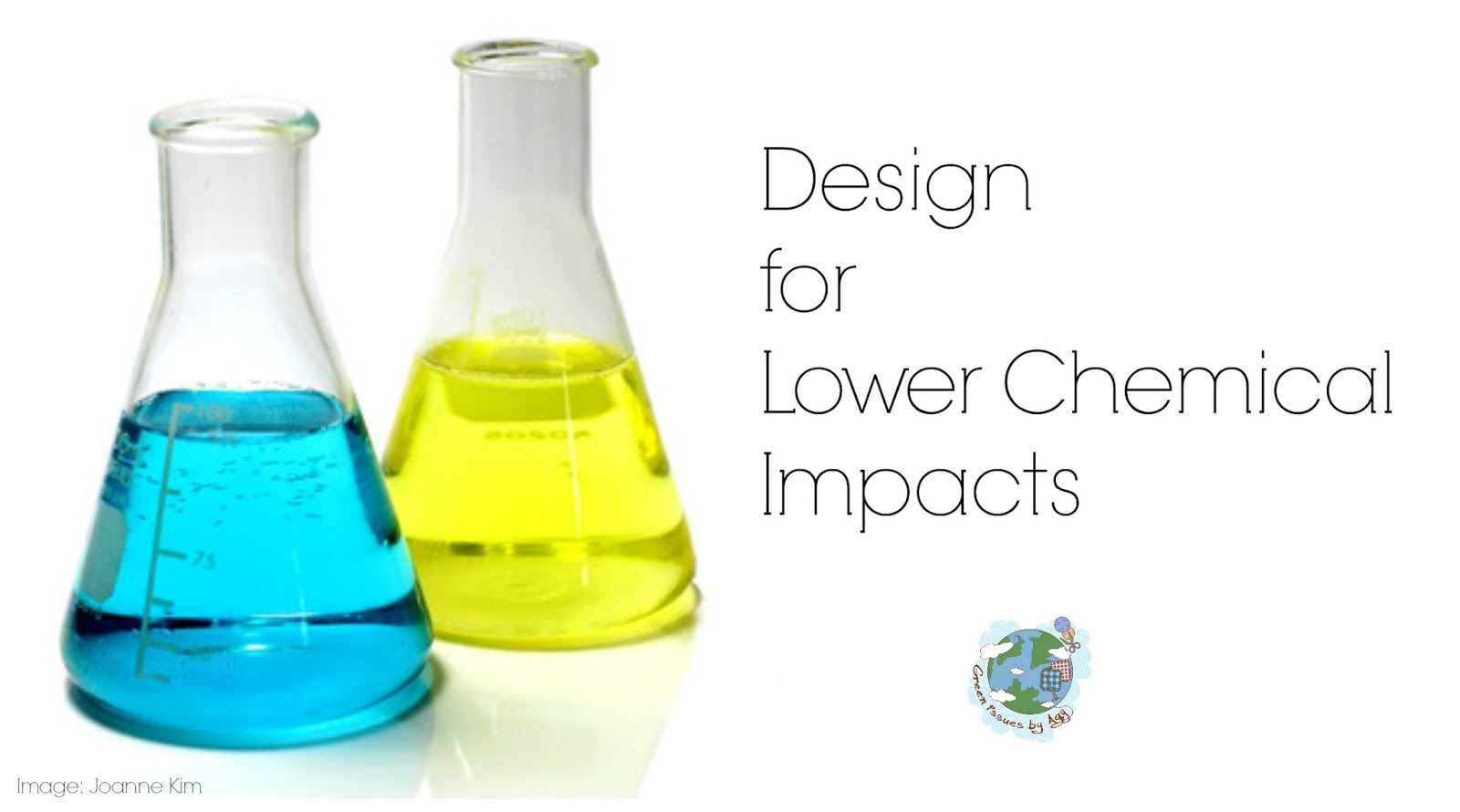Let's Talk Chemical Impacts.
Have you ever looked at the label on your clothes? Have you questioned what the garment is made of?
As designers, the choice of fabric and processes involved in textile production influence the environmental impact of the garment from the production of the textile, to garment production and eventually driving consumer care requirements. We are talking about chemical impacts, energy and water usage. How can we design to minimise these? This week we are talking about chemical impacts.
#1 Material Selection
I'll Wear Natural, I'll Wear Organic
Most consumers believe that by wearing natural or organic they will be chemical-free. Unfortunately, this is not the case; all textiles/garments are harmful to the environment in their own way and chemicals make their way into the life-cycle of a garment be it at the fiber production (e.g pesticides, herbicides, insecticides, sodium hydroxide), or during textile production / garment manufacture (e.g. dyes, formaldehyde etc to achieve certain finishes). Let's go into a few textiles:
"Conventional (non-organic) cotton is grown and harvested using heavy quantities of chemical
fertilizers, pesticides and herbicides in production to maximize efficiency and output.
Conventional cotton is one of the most chemically dependent crops, using 16 percent
of all insecticides used for global food and fiber production
n It takes 1/3 of a pound of chemicals to produce enough cotton for a t-shirt,
and 3/4 of a pound for a pair of jeans.
Three of the 10 most acutely hazardous insecticides are commonly used chemicals
to grow cotton" Natural Resources Defense Council


If you are choosing organic, bear in mind that it is not chemical-free. Read up on the standards your chosen organic textile is certified under. Remember, most standards state which chemicals are allowed/approved for use. An example is the Global Organic Textile Standard (GOTS), which clearly defines what is allowed for use or prohibited.
Bamboo - Mechanical Vs Chemical Processing
One of my friends swears by bamboo as the crop does not require pesticides or insecticides; she also loves it because it is soft and silky and more breathable than cotton.
However, when sourcing for bamboo textiles, always do your research; not all of them are created equal.


Bamboo textiles can be created either mechanical or chemical processing. The mechanical process is very eco-friendly and only relies on the bamboo's natural enzymes to break down the bamboo into a mush before fibers are combed out and spun. The chemical process, however requires carbon disulfide to turn the cellulose into a gel. Sodium hydroxide is then added to "spin" fibers. This process, known as hydrolysis alkalisation, is less time-consuming than the mechanical process, but it is also highly toxic. According to Patagonia:
"The solvent used for this process is carbon disulfide, a toxic chemical that is a known human reproductive hazard. It can endanger factory workers and pollute the environment via air emissions and wastewater. The recovery of this solvent in most viscose factories is around 50%, which means that the other half goes into the environment. Other potentially hazardous chemicals are also used in the viscose process, including sodium hydroxide and sulfuric acid."
"For almost all bamboo fibre used in industrial textile production not the natural bamboo is used but it is melted and regenerated in a viscose / rayon process and can therefore not be considered as natural or even organic fibre, even if the bamboo plant was originally certified organic on the field. In consequence in GOTS certified textiles bamboo fibres can only be used for the tolerated remaining balance of conventional fibers. If the rayon is made from organically grown bamboo up to 30% may be used for the label grade ‘made with organic materials’. These rules apply to regenerated fibres derived from any other raw material source (e.g. wood, cotton lints, soybean, milk) as well. Users of bamboo (and other regenerated) fibres should also be aware about the legal labelling requirements in their sales markets. In the US, the FTC (Federal Trade Commission) has clarified that if bamboo is produced through rayon process these fibers must be called rayon and not bamboo"
Fashion Incubator is a good reference if you want to avoid trouble when using bamboo fabrics.
Polyester
Polyester is the most popular synthetic textile and is made from crude oil. Oh, and don't forget, it is CHEAP! If you recall your science class at school, the formation of polyester involves catalytically transforming monomers to a polymer. The whole process involves a lot of energy and chemicals as shown below, and releases Volatile Organic Compounds into the environment. A good read up about it can be found here. Unfortunately, these chemicals (including catalysts, such as antimony, which is toxic) can persist in textiles and come in contact with the skin of people using the finished textiles. It is without a doubt, the process is an environmental and public health burden.
What choices are there? Again, it pays to do your research! There are polyester textiles that are manufactured using antimony-free catalysts. According to the Eco Forum, " EU Eco-label system requires limitations on the use of polyester catalysts – however does not exclude them. The maximum content of antimony in polyester fibres is limited to 260ppm with the EU Eco-labelling criteria, while the Oeko-Tex standard limit is 30ppm."
#2 Cleaner Processes
Does your fabric supplier have water treatment facilities in place?
I think this is a very important question to ask when sourcing for fabrics. Before any waste water effluent is discharged, it must be treated. Not treating it would be detrimental to the environment and to public health.
No Dyes?
Why not opt for undyed or colour-grown fabrics? Others ask why not use natural dyes instead of synthetic ones? Well, natural is not synonymous with healthy or green. And it definitely does not mean that it was organically grown or sustainable. In fact, the use of natural dyes requires toxic mordants to fix them into the fibers.
Are there technologies that can reduce the need for chemicals in the garment industry? The Guardian recently wrote and article about technology that reduces water consumption in the dying process. I think these reduce the amount of polluting dyes used too as traditional dyeing methods are inefficient. Other advances include ozone technology instead of conventional bleaching methods (e.g. for denim textiles), using heating methods as a dyeing technique and laser technology for adhesives.

Are there any other ways to lower the chemical impacts in the industry?
This post is part of the Fashion Designers Do Good series.




















I had no idea how complicated it was to have eco-friendly clothes. I loved reading about bamboo since it is one of my favorite fabrics.
ReplyDeleteVery interesting and informative, Agy...
ReplyDeleteThanks for the informative read about chemicals. It's good to be aware that although organic materials may be used, the process to manufacture or dye them may not be good for the environment. It's good to know about organizations like GOTS that ensure processes are not harmful.
ReplyDeletehttp://passportcouture.com
Bamboo shirts are the best!
ReplyDeleteI'm not particularly keen to the "organic" lifestyle, but I totally value free choice.
Great post, very informative. Sharing this on G+. Thank you for making us aware of this subject, I learned quite a lot from reading your posts.
ReplyDeleteVery interesting - so much to watch out for!
ReplyDeleteGreat post, and great information. I've always wondered if natural clothing products were actually any better.
ReplyDeleteThanks for the information. I love bamboo fabrics.
ReplyDeleteWow thanks for the great information on this! I had no idea there was so much involved. Sometimes it's easier to not think about some of these things but when you do you realize how bad some of it is!
ReplyDeleteWow! That's something I never thought of before. I buy most of my clothes second-hand, so I don't really worry too much about this. It would be really helpful (maybe a follow-up article?) to find some companies or specific lines of clothes that were more environmentally friendly.
ReplyDeleteI can't believe that bamboo can also be used for textiles. I'm not really aware of it, until I found out in some of the fabric facts, bamboo can be used to make yarn. Anyway, thank you for bringing some good stuff here. It's very interesting.
ReplyDelete